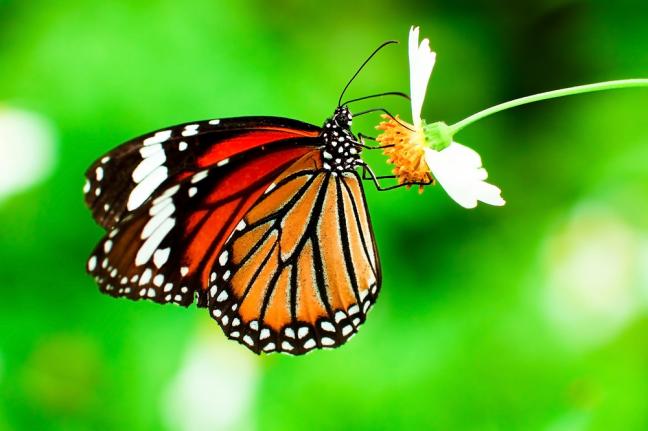‘Habitat-enhanced’ Vineyards are Good for Butterflies

SEATTLE, May 11 (UPI) — Butterfly populations have declined across the entirety of the United States, and Washington state is no different. Over the last several decades, habitat loss has resulted in the decline of some 50 butterfly species in eastern Washington.
But conversationists are seeing an unexpected ally in the fight to bring back butterflies — wine makers. In an effort to control pests, a number of sustainability-minded vineyards in Washington have been working to bolster the natural habitats surrounding their grape vines — a buffer zone that keeps out the bad insects by attracting the good ones like parasitic wasps.
[one_fourth]
[/one_fourth][three_fourth_last]
And the latest results suggest the experiment has resulted in a surprise benefit, a butterfly comeback.
In a recent study, biologists at Washington State University found that there were quadruple the number of butterflies and triple the number butterfly species at so-called habitat-enhanced vineyards, as compared to conventional grape-growing operations.
While only an average of five species were found on traditional vineyards, habitat-enhanced vineyards boasted 20 different butterfly species.
Butterflies don’t offer a direct benefit to the vineyards, but they are an important part of a balanced ecosystem and proof, Washington State entomologist David James says, that sustainable agriculture can provide a range of added and unexpected benefits.
“Conservation of butterflies is becoming an issue because all species are declining,” James said in a press release. “The habitat has been taken away by agriculture. This is a way of giving back. We’re showing that an agricultural industry can live alongside the natural ecology and help preserve and conserve it.”
Thirty years ago, James wrote his dissertation on the monarch butterfly. Back then, he says, butterflies weren’t yet on the decline.
“But to now combine practical pest management work with butterflies is remarkable,” James said. “And I think it will only grow as we continue to see the benefits of natural pest management around the world. Nature conservation and agriculture will be intimately linked in the future. The Washington wine grape industry is a pioneer of this movement.”
The new research was published in the Journal of Insect Conservation.






